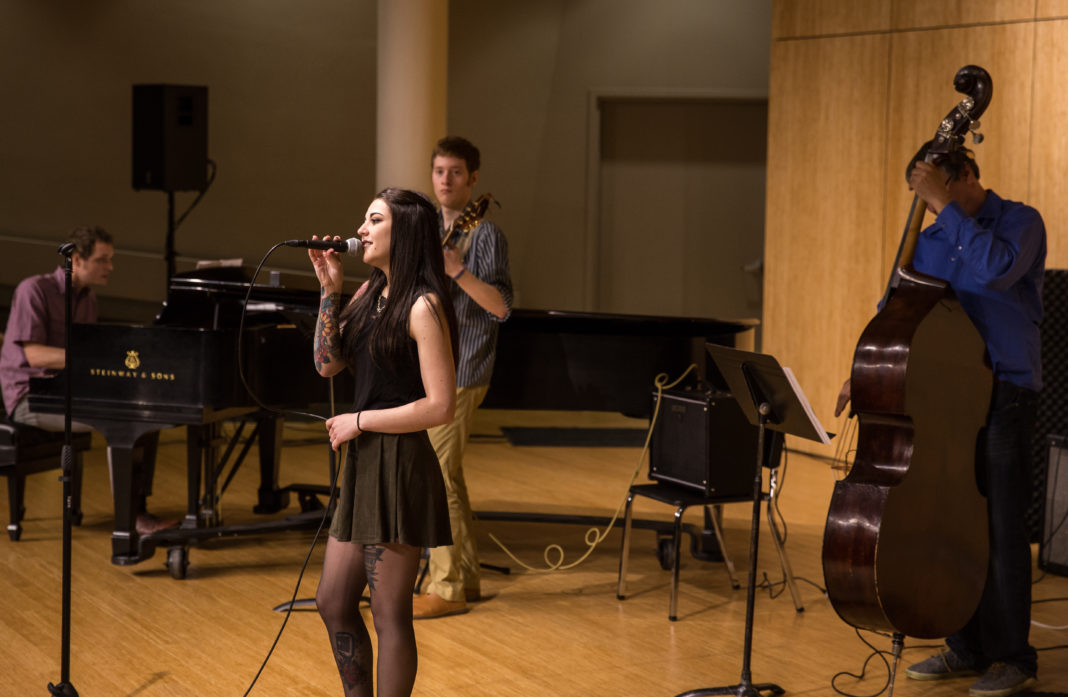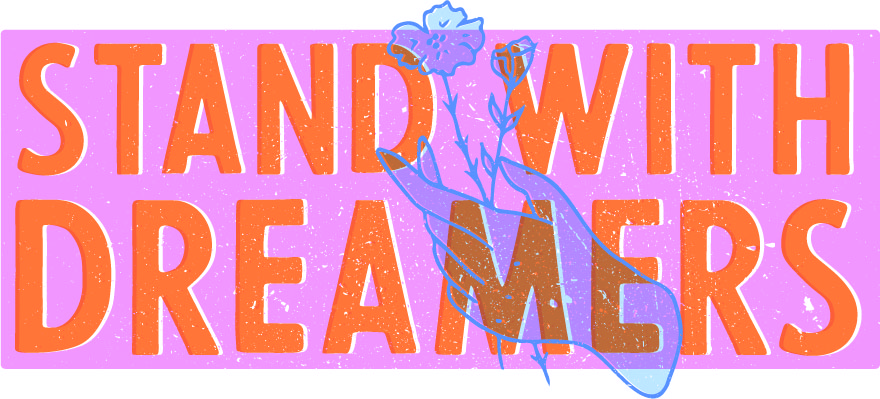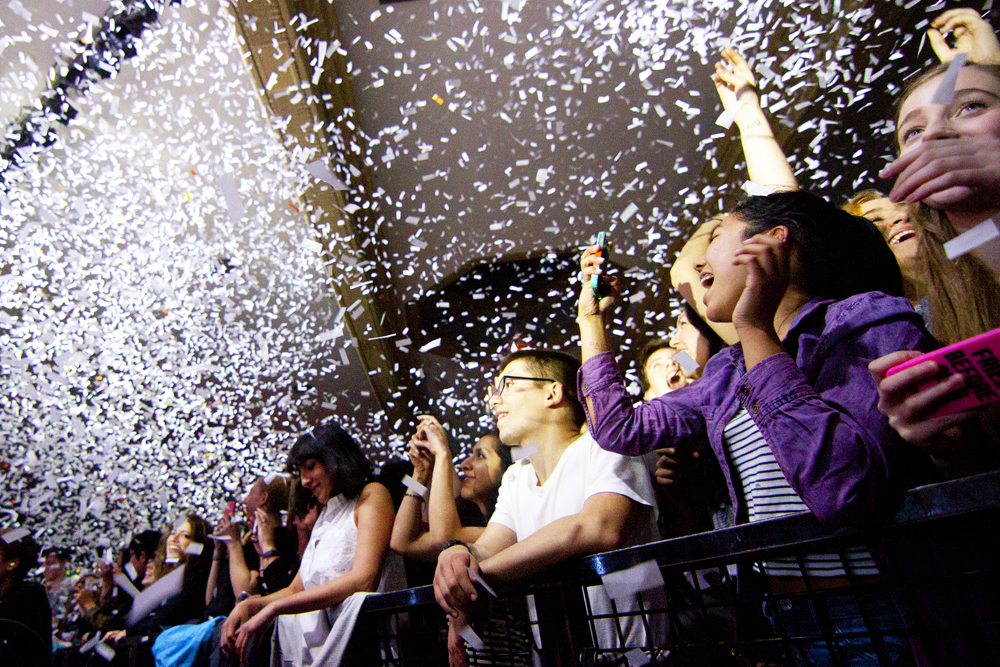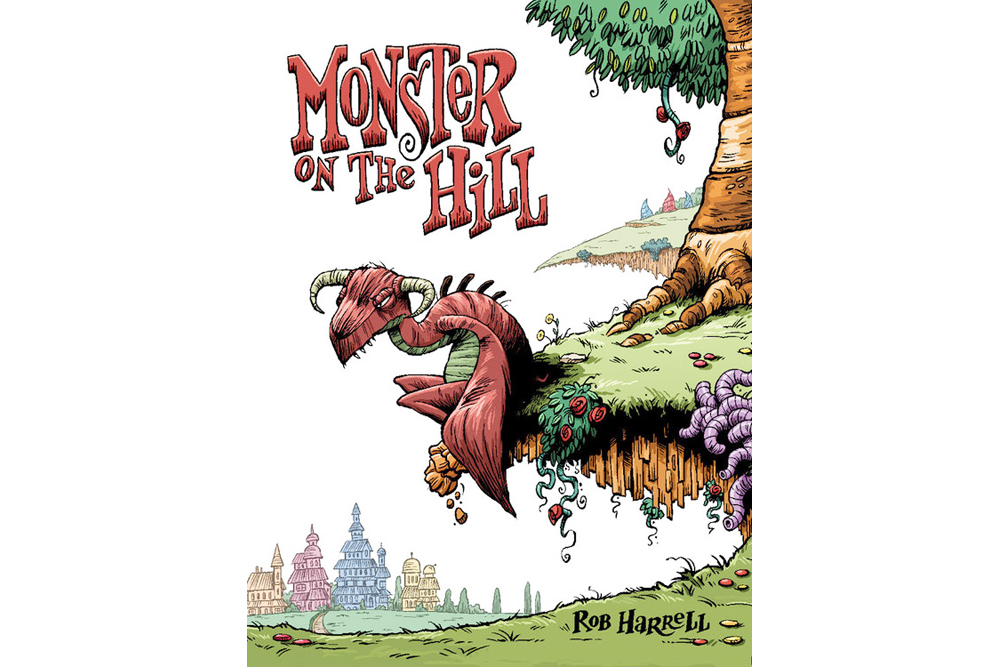The April 26 noon concert in Lincoln Recital Hall was ostensibly a Jazz Area concert, but since jazz is as broad a term as classical, we were treated to a wide swath of stylistic variety—from the vibrant, cybernetic drum solo that opened the show to the raucous jazz fusion breakdown that closed it. In between, the audience heard chill combo jazz, a couple of Latin numbers and four extraordinary singers from all across the vocal jazz spectrum.
“I guarantee you’re gonna hear things today that you ain’t never heard before,” announced jazz studies Professor Darrell Grant. How right he was. Micah Hummel’s semi-improvised “Mason Jar” blew us all out of the water right away, using nothing more than a bass drum, hi-hats and a pair of electronicized drums with mesh heads running into a laptop.
The first drum—where the snare drum would be in a normal drum kit—handled all the quick, intricate flourishes we expect from contemporary jazz fusion drummers, adding all manner of quirky, synthy sound droplets to Hummel’s dazzling display of percussive virtuosity.
The second drum—where the floor tom ought to be—handled all the chords, a sequence of major-minor fluctuations. As Hummel chittered his way around the beep-boop snare and hi-hat, he occasionally punctuated the groove with hits on these chords.
After something like that, you can’t go right into the classic jazz groove, which is why it was a good time to haul out a pair of upright basses and play some Bach. Bassists and co-arrangers Tim Gilson and Perry Thoorsell hoisted their giant instruments into place downstage as Thoorsell cracked wise about their rendition of Bach’s “Prelude #2 in C minor” from The Well-Tempered Clavier.
“I’ve always wanted to play Bach in the worst possible way,” Thoorsell said. “This is more like the ill-tempered clavier!” Gilson and Thoorsell ripped through the prelude’s 16th-note chord patterns with concentrated fury before launching into a series of jazzy riffs and solos on the prelude’s changes.
These two back-to-back—Hummel and The Bassists, I mean—made for a mighty weird intro. What followed was, for the most part, normal jazz, the vocal jazz combo warming up on a Chucho Valdés instrumental before welcoming a series of singers to the stage. Pianist Ethan Maier whizbanged out some exciting jazz mambo riffage, Thoorsell showed off his swing chops, guitarist Kai Slemenda took a sweet solo and drummer Lee Hauser held the groove with excellent little timbale-like flourishes.
The combo stayed on for the first two singers: Lauren Gruber performed a ton of sweet scat-singing on her arrangement of Todd Dameron’s “Good Bait,” and Heather Sessler did some rather different scat work on Bobby Troup’s “Baby, Baby All the Time.” Before singing, Sessler said with a smile, “I’m fulfilling the blues requirement of the Jazz Area noon concert.”
Two quieter songs followed: Guitarist Madeline Okano and pianist Lifia Teguh backed Danielle Barker for an unamplified rendition of Consuelo Velázquez’s “Besame Mucho,” and Grant accompanied Maeve Dahlien on Grant’s arrangement of Mvula & Brown’s “Sing to the Moon.” Barker told the audience, “This is the first song I’ve sung in Spanish, so if there are any Spanish speakers out there—sorry!” Dahlien and Grant took the concert in a poppier direction, Grant playing sophisticated solos, Dahlien joyously singing, “Sing to the moon and the stars will sing!”
Grant grinned wide again and said, “That’s just a tiny of fraction of what we’ve got going on in the Jazz Area.” There are no less than 14 recitals coming up, plus a concert on June 4 featuring the PSU Big Band and the PSU Orchestra playing together for the first time as the PSU Studio Orchestra.
It wouldn’t be a jazz variety show without a loud fusion band for a closing act. Pianist Paris Butler strummed the opening chords of Ben Allison’s “Enter the Dragon” as drummer Quin Hanson and electric bassist Wyatt Unger dug in on a galactic kind of groove. Guitarist Joseph Mammarella seemed to be having some trouble with his amp, but as the fast be-boppy bridge melted down back into the angular main theme, he got some cool licks in. Over the whole thing, tenor saxophonist Neil Teller took advantage of the space carved by his loud, heavy backing band and filled the sound in with long, smooth, cascading Coltrane-esque melodies.
I had to ask Hummel about those electronic drums, so I grabbed him outside Lincoln Hall, where I also chatted with Teller and bassist Jared Stroeve.
“I really liked the different styles, and all the different compositions,” Stroeve said. “My favorite was the performance with Darrell and Maeve, and I really liked the vocal combo and the dynamics they had going on. They really played well together and made sure everyone was on the same page, really a team effort. Of all the noon concerts, this had some of the most variety of sounds. I’ve never heard the drums played so melodically!”
Of “Enter the Dragon,” Teller said he enjoyed its varied stylistic possibilities. “It has the traditional [ding ding-a-ding] jazz, and still has that element of freedom in improvisatory music, but also has that fusiony rock vibe,” Teller explained. “It’s something that I have a little more space to improv over, it’s kinda modal. Our group does rock pretty well; that’s kind of our niche. And [it] was cool being able to play in that hall. It’s the first time I’ve ever played there.”
Hummel told me his electronic drums are made by Sunhouse Sensory Percussion. They’re hardware and software: a mesh drum head and a program to interface with it and run the weird sounds. “It’s basically like an advanced contact mic, so it maps the drum into 10 different zones,” Hummel said. “And then I can also control effects through those zones. So if I wanted a reverb sound, if I hit the drum really hard it could have more reverb and if I hit the drum soft I could have less reverb.” Hummel explained that it’s a preloaded set of chords and pitches he created beforehand and controlled by velocity and location on the drum. “What I was doing there, the further out to the edge of the drum I got, the higher the pitch,” he said.
I asked Hummel who inspires him musically, and who he listens to when he decides to do something like this. “Well, I love Radiohead,” Hummel said. “There’s a drummer named Ian Chang, he’s the drummer for Son Lux, and he has the same sensors, and he’s one of the main guys doing that kind of stuff. There’s a guitar player named Jakob Bro who does some really good stuff. There’s an album called Balladeering which is all ballads.”
Do the drums only work with their own software, or can you run them on other programs? “You can run it through any standard DAW,” Hummel said, using a common acronym for Digital Audio Workstation, a category of programs which process music and sound. “I run it through Ableton to record pretty frequently, and Logic as well. But a lot of the cool stuff comes from the software they provide, which is specific to the drum. There’s a lot of possibilities. It’s a huge learning curve.”
How did Hummel hear of these drums? “One of my favorite drummers, Marcus Gilmore—he’s Roy Haynes’ grandson—he has them as well,” he said. “A jazz musician made them, in Brooklyn, so a lot of the modern jazz drummers are using em on gigs now. You can see them on Instagram going to the Sunhouse headquarters and checking them out.”
“It’s a really new technology, so there’s not a lot of people playing them, so everybody who has them is—trial-and-error—figuring it themselves,” Hummel said. “They’re really fun! It’s opened up a whole new world on the drumset.”
For more information on the School of Music & Theater’s free weekly Noon Concert Series, including a complete schedule, visit www.pdx.edu/music/noon-concert-series






